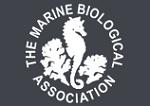APHOTOMARINE
An educational resource dedicated mainly to the photography
and diversity of marine life that can be found in coastal waters
and intertidal areas of Great Britain and Ireland by David Fenwick.

Aslia lefevrei
- in crevice / lowershore 1
Brown sea cucumber
Aslia lefevrei
- in crevice / lowershore 2
Brown sea cucumber
Aslia lefevrei
- in crevice / lowershore 3
Brown sea cucumber
Aslia lefevrei
- in crevice / lowershore 4
Brown sea cucumber
Aslia lefevrei
- in crevice / lowershore 2
Specimen above found in a rock crevice on the lowershore at Porthpean, Cornwall. 30.03.10.
Brown sea cucumber
Aslia lefevrei
- feeding / tentacles 1
Specimen above found in a pool on the lowershore at Spit Point, Par, Cornwall. 31.03.10.
Brown sea cucumber
Aslia lefevrei
- anterior 1
Brown sea cucumber
Aslia lefevrei
- mid-section feet 1
Brown sea cucumber
Aslia lefevrei
- feeding tentacles 1
Brown sea cucumber
Aslia lefevrei
- plates 0.1mm division rule 1
Brown sea cucumber
Aslia lefevrei
- plates 0.1mm division rule 2
Specimen above found under a rock on the lowershore at Chimney Rocks, Penzance, Cornwall. 31.07.15.
Brown sea cucumber
Aslia lefevrei
- washed-up on shore 1
Brown sea cucumber
Aslia lefevrei
- washed-up on shore 2
Brown sea cucumber
Aslia lefevrei
- plates 1
Brown sea cucumber
Aslia lefevrei
- plates 2
Specimen above was washed-up on the low tide line at Holywell Bay, near Newquay, Cornwall. 10.02.16. Specimens was unusually white so it had to be determined by its plates.
Scientific and European Names:
Aslia lefevrii, Brown sea cucumber, Kletterholothurie, Klimmende zeekomkommer, Leche-doigts, Pepinillo de mar.
APHOTOMARINE supports open source data recording and sharing for the benefit of wildlife, recorders, research, science and education. The project recommends the following websites and works with the following bodies and organisations.
The Marine Biological Association or MBA, based in Plymouth, is one of the world’s longest-running societies dedicated to promoting research into our oceans and the life they support. Since 1884 the MBA has been providing a unified, clear, independent voice on behalf of the marine biological community.It has a growing membership in over 40 countries.
The National Biodiversity Network or NBN is a charity that supports open source data sharing and recording supporting conservation, science and education. "Why do recorders need open source?". Simply because it supports the core values of wildlife recording and the free use of records and data over a very wide network that includes partners like the Natural History Museum.
The taxonomy used here is based on that of the following database, which is also used by the MBA, NHM and the NBN.
The World Register of Marine Species or WoRMS.

